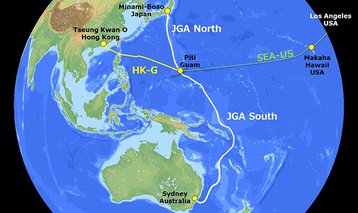The construction of the Japan-Guam-Australia cable system (JGA), a 9,500-kilometer submarine fiber optic route, has officially commenced. With a design capacity of more than 36Tbps, the JGA is expected to be completed in the fourth quarter of 2019.
The project is led by a consortium including RTI Connectivity Pte Ltd (RTI-C), AARNet Pty Ltd (AARNet) and Google, together with Alcatel Submarine Networks (ASN) - now part of Nokia - and NEC Corporation.
From Tokyo to Sydney
The cable system is expected to contribute to the expansion of communications networks from Japan and Australia to Asia and the United States. When completed, it will improve network redundancy and improve onward connectivity options in Guam.
“By adding JGA to our existing cable investments, RTI is well positioned to serve these massive data growth needs. JGA’s unique design will also improve latency between Tokyo-Sydney, while greatly reducing provisioning timeframes,” said Russ Matulich, RTI-C’s president and CEO.
“New submarine cable systems are providing a much-needed boost to communications infrastructure into Australia,” added Chris Hancock, CEO of AARNet.
”AARNet’s investment in JGA complements our investment in the INDIGO subsea cable system, providing connectivity into North and Southeast Asia to meet the substantial growth in bandwidth demand for science, research, teaching and learning. This will allow Australian universities to have unconstrained access to meet the big data challenges of the future.”
Multiple organizations have been working to improve Australia’s connectivity to the rest of the world, which had been prone to disruptions and slowdowns stemming from the frequent submarine cable outages. A number of submarine cables such as the Australia Singapore Cable, Trident Subsea Cable and Hawaiki Submarine Cable have been either recently completed or nearing completion, and the availability of the JGA will only serve to increase network diversity.

